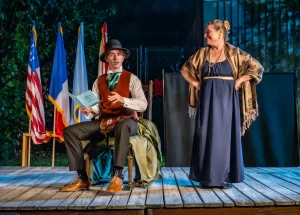Night of the Radishes
by Dave Skinner, [email protected] | Le Jardin Ombragé, Tallahassee, Florida, USA http://www.gingersrus.com
There are many different Christmas traditions around the world, and Latin America has many of its own special traditions. Last August I was in the state of Oaxaca in Mexico which has one of the most unique of all Christmas time celebrations. It is called the Night of the Radishes. It began after the Spaniards introduced radishes to Mexico in the 16th century and, according to legend, two Spanish friars encouraged the local indigenous people to grow them in the rich valley of the Río Atoyac.
Centuries later, in order to attract buyers at the Zócalo market in Oaxaca, the farmers carved some radishes into figurines. This practice grew into an annual tradition and on December 23rd, 1897 the mayor of Oaxaca, Francisco Vasconcelos Flores declared the first “night of the radishes” to exhibit the radish artwork. This year on December 23rd will be the 120th consecutive year that these carvings are exhibited in the city of Oaxaca. Each year there are more than 100 entries for judging of the radish displays, and prizes totaling over $1000 are awarded in various categories. The grand prize is 15,000 Mexican pesos.
Today the radishes are grown in a plot near the airport, where they are heavily fertilized to produce huge radishes, not intended for consumption, only for carving. Some can grow as large as 50 centimeters (20 inches) and to weights of 3 kilograms (6.6 pounds).
Befitting the time of year, a popular theme for the radish sculptures is to create Nativity scenes, but it is only the imaginations of the artists that set any limits to the topics. Radishes of unusual shapes and sizes are enhanced to create animal sculptures, native indigenous peoples, and a myriad of other themes. The radish displays are often augmented with cornhusks and other vegetables.

The radishes for carving are usually harvested around December 18th and the carving begins just a day or two before the event so that the vegetables are still fresh when exhibited. The exhibit begins late in the afternoon of December 23rd and final judging is at 9 PM. People start lining up hours ahead of time forming long lines of people snaking their way through the exhibits. The artists are usually standing by their exhibits with misters to spray water over their treasured works of art. The next day there are parades and celebrations, then on Christmas day is another grand fiesta with fireworks, music, and dancing.


